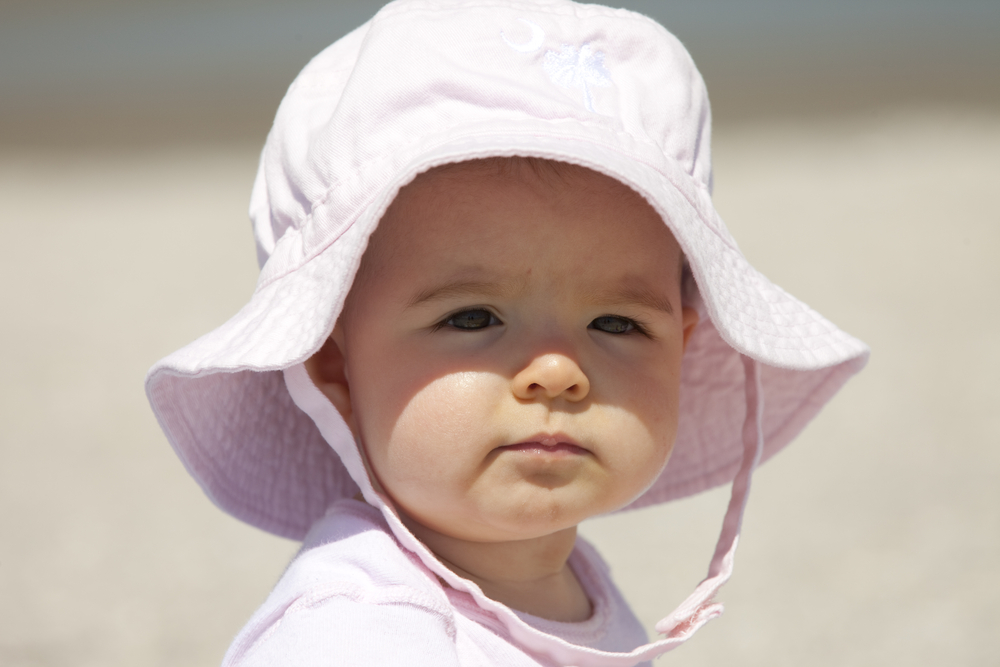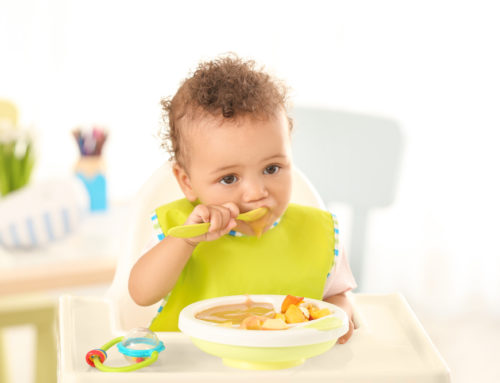_x000D_ It’s a beautiful summer morning. The sun is shining, there’s not a cloud in the sky and a warm breeze is beckoning you to the beach with your baby. But before you head outdoors, be sure you know how best to protect your little one from the elements so you can enjoy the sun safely. Deciphering Sunscreen Jargon When it comes to selecting the right sunscreen for your child, there are certain considerations to be made. “The best recommendation is to keep babies under six months out of direct sunlight altogether whenever possible,” advises Dr. Laura A. Jana of Practical Parenting Consulting (www.practicalparentingonline.com) in Omaha, NE. “If shade or protective clothing is not available, then small amounts of sunscreen on exposed areas—back of hands, face—is considered okay.” Because there is no shortage of sunscreen products on store shelves these days, new parents face a dizzying array of choices. When reading product labels, be on the lookout for buzzwords like “broad spectrum”—meaning a sunscreen that protects against both UVA and UVB radiation. “Think of UVA as the light that causes your skin to Age and UVB as the light that is responsible for Burning,” explains Dr. Wendy Sue Swanson from the Seattle Children’s Hospital, The Right Ingredients and Application Sunscreen ingredients like zinc oxide and titanium dioxide ensure coverage of both UVA/UVB rays. “Many sunscreens with these ingredients have small particles to avoid a white opaque look,” notes Dr. Glenn Kolansky, a board-certified dermatologist in Red Bank, NJ. Testing your child’s skin in small amounts can determine whether or not she has a reaction to a particular product. As far as SPF is concerned, doctors advise a minimum of SPF 30 for optimal protection. “Sunscreens that are hypoallergenic and fragrance-free are especially helpful for young children,” adds Kolansky. Reapplying every 2-3 hours is critical during long-term sun exposure. And when possible, avoid the sun at peak exposure: 10 am to 4 pm. As for how much to apply, Swanson adapts the shot glass measurement for a more kid-friendly equivalent: one ounce of a baby bottle. “The easiest way to get a squirmy child covered is by applying sunscreen when she’s strapped into her car seat,” she offers, adding that spray sunscreens get the job done, but should be rubbed into the skin to penetrate any missed areas. Sunscreen Favorites While it isn’t necessary to use sunscreens specifically aimed at children, we can’t help but notice the abundance of products that skew to a younger demographic. Two of our favorites are Baby Blanket Suncare (www.babyblanketsuncare.com) , with its explicitly labels featuring titanium dioxide and zinc oxide, and MD Breathable Skin While it’s essential to protect your baby’s skin with sunscreen, dressing her in the appropriate warm-weather clothing is also helpful for maintaining her comfort level. Opt for a hat to shield your baby’s face, and look for ones with under-the-chin straps to prevent little ones from pulling them off. Sun protection clothing with a UPF of 15-50 is highly recommended for their extra level of protection. “You may get UV protection from regular penetration—nylon or polyester disrupts penetration more than natural cotton,” notes Kolansky. “But with UPF-rated clothing, you are assuring that protection.” And while you’re enjoying your day in the sun with your little one, it never hurts to be extra-vigilant. “Babies can’t tell us they are hot, so we must make assumptions,” says Swanson. Check in every 15 minutes or so to see that young children have shade and are out of the sun.




